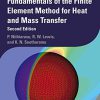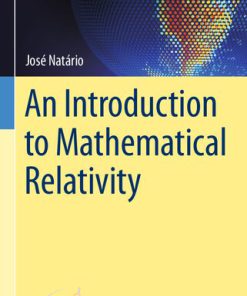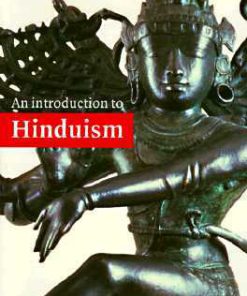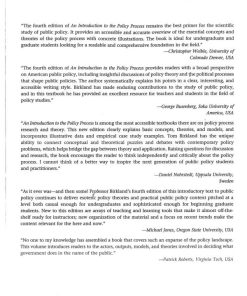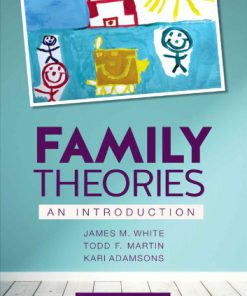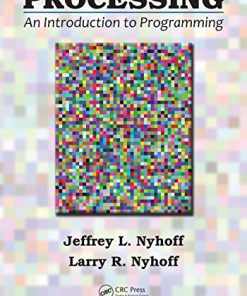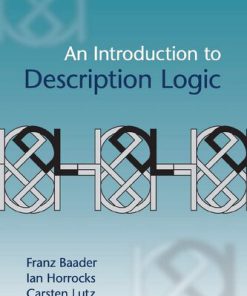An Introduction to Gauge Theories 1st Edition by Nicola Cabibbo, Luciano Maiani, Omar Benhar 1315352710 9781315352718
$50.00 Original price was: $50.00.$25.00Current price is: $25.00.
An Introduction to Gauge Theories 1st Edition by Nicola Cabibbo, Luciano Maiani, Omar Benhar – Ebook PDF Instant Download/DeliveryISBN: 1315352710, 9781315352718
Full download An Introduction to Gauge Theories 1st Edition after payment.
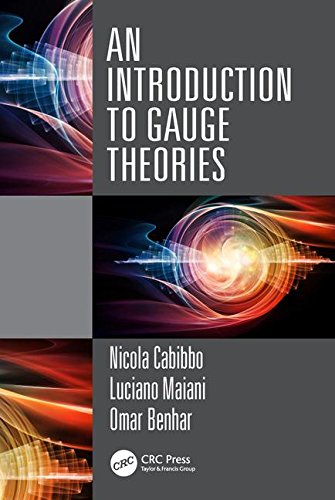
Product details:
ISBN-10 : 1315352710
ISBN-13 : 9781315352718
Author: Nicola Cabibbo, Luciano Maiani, Omar Benhar
Written by world-leading experts in particle physics, this new book from Luciano Maiani and Omar Benhar, with contributions from the late Nicola Cabibbo, is based on Feynman’s path integrals. Key elements of gauge theories are described—Feynman diagrams, gauge-fixing, Faddeev-Popov ghosts—as well as renormalization in Quantum Electrodynamics. Quarks and QCD interactions are introduced. Renormalization group and high momentum behaviour of the coupling constants is discussed in QED and QCD, with asymptotic freedom derived at one-loop. These concepts are related to the Higgs boson and models of grand unification. “… an excellent introduction to the quantum theory of gauge fields and their applications to particle physics. … It will be an excellent book for the serious student and a good reference for the professional practitioner. Let me add that, scattered through the pages, we can find occasional traces of Nicola Cabibbo’s style.” —John Iliopoulos, CNRS-Ecole Normale Supérieure ” … The volume ends with an illuminating description of the expectation generated by the recent discovery of the Higgs boson, combined with the lack of evidence for super-symmetric particles in the mass range 0.6-1 TeV.” —Arturo Menchaca-Rocha, FinstP, Professor of Physics, Mexico’s National Autonomous University, Former President of the Mexican Academy of Sciences, Presidential Advisor “…The reader is masterfully guided through the subtleties of the quantum field theory and elementary particle physics from simple examples in Quantum Mechanics to salient details of modern theory.” —Mikhail Voloshin, Professor of Physics, University of Minnesota
An Introduction to Gauge Theories 1st Table of contents:
Chapter 1 ▪ Introduction
1.1 Quantum electrodynamics
1.2 Units and other conventions
Chapter 2 ▪ The Feynman Path Integral
2.1 Calculation of the transition amplitude
2.2 The lattice approximation
2.3 The classical limit
2.4 Time as a complex variable
2.5 Statistical mechanics
2.6 Green’s functions
Chapter 3 ▪ Towards a Field Theory
3.1 The generating functional
3.2 The harmonic oscillator
3.3 Free scalar fields: propagator and generating functional
3.4 Free scalar field: One-particle states
3.5 Creation and destruction operators
Chapter 4 ▪ Equations of Motion, Symmetries and Ward’s Identity
4.1 Sum over paths and operators
4.1.1 Derivatives
4.2 The fundamental identity
4.3 Quantum mechanics
4.3.1 Equations of motion and commutation rules
4.3.2 Symmetries
4.3.3 The Hamiltonian function
4.4 Field theory
4.4.1 Symmetries in field theory
4.4.2 Ward’s identity
4.5 The symmetries of the vacuum
Chapter 5 ▪ The Electromagnetic Field
5.1 The choice of gauge
5.2 Generating functional and propagator
5.3 Single photon states
5.4 Virtual photons
Chapter 6 ▪ Fermion Fields
6.1 Harmonic and Fermi oscillators
6.1.1 Anticommuting variables
6.1.2 Sum over paths for the two oscillators
6.1.3 Gaussian integrals for commuting and anticommuting variables
6.2 Quantisation of the Dirac field
6.2.1 Fermion propagator
6.2.2 The spin-statistics theorem
6.2.3 One-particle states of the Dirac field
Chapter 7 ▪ Scattering Processes and The S-Matrix
7.1 “In” states and “out” states
7.2 Scattering amplitudes and the S-matrix
7.3 Conserved quantities
7.4 The LSZ reduction formulae
Chapter 8 ▪ Perturbative Green’s Functions in
8.1 The perturbative generating functional
8.2 Feynman rules for Green’s functions
8.3 Connected parts and vacuum diagrams
8.4 Perturbative two-point Green’s function
Chapter 9 ▪ S-Matrix Feynman Diagrams in
9.1 One-particle irreducible diagrams
9.2 Feynman rules for the S-matrix elements
Chapter 10 ▪ Quantum Electrodynamics
10.1 Feynman diagrams for the generating functional
10.2 Two-point functions
10.3 Reduction formulae
10.4 Feynman diagrams for the S-matrix
10.5 Combinatorials
Chapter 11 ▪ Renormalisation of QED
11.1 The photon propagator
11.2 Renormalisation of the charge
11.3 The electron propagator
11.3.1 The propagator to all orders
11.4 The vertex
11.5 Ward’s identity
Chapter 12 ▪ Applications of QED
12.1 Scattering in an external field
12.2 Bremsstrahlung and infrared divergence
12.3 The Lamb shift
12.4 Vacuum polarisation
12.4.1 Calculation of the tensor to one loop
12.5 The anomalous magnetic moment
12.5.1 Preliminaries
12.5.2 The calculation
Chapter 13 ▪ Renormalisation Group of QED
13.1 Effective electric charge
13.2 The Gell–Mann and Low equation
13.3 The QED function
13.4 Asymptotic variation of the effective charge
Chapter 14 ▪ Quantising a Non-Abelian Theory
14.1 Fundamentals
14.2 Quarks in quantum chromodynamics
14.3 The Faddeev–Popov determinant
14.4 Feynman rules
Chapter 15 ▪ The Function In QCD
15.1 Vacuum polarisation
15.2 Corrections to quark propagator and vertex
15.3 Asymptotic freedom
Chapter 16 ▪ Unitarity and Ghosts
16.1 The Cutkosky rule
16.2 The inelastic reaction
16.3 The case of QED
16.4 Non-Abelian gauge theories
Chapter 17 ▪ Effective Constants at High Energy and Grand Unification
17.1 The determination of
17.2 The Landau pole and the continuum limit
17.3 Effective constants of the Standard Theory
17.4 Grand unification and other hypotheses
Chapter 18 ▪ Limits on the Mass of the Higgs Boson
18.1 Scalar fields in the Standard Theory
18.2 Limits on the mass of the Higgs boson
Chapter 19 ▪ The Weak Muon Anomaly
19.1 The Gauge
19.2 Muon anomaly: W exchange
19.3 Z and Higgs boson exchange
19.4 Comparison with data
Chapter 20 ▪ Effective Potential and Naturalness
20.1 Effective potential
20.2 Expansion around the classical limit
20.3 Loop expansion of the potential
20.4 One loop potential in the Standard Theory
20.5 Non-naturalness of the Standard Theory
People also search for An Introduction to Gauge Theories 1st:
an introduction to gauge theories and modern particle physics pdf
an introduction to gauge theories and the new physics
an introduction to gauge theories cabibbo nicola
an introduction to gauge theories pdf
an informal introduction to gauge field theories
Tags: An Introduction, Gauge Theories, Nicola Cabibbo, Luciano Maiani, Omar Benhar
You may also like…
Physics - Relativity
An Introduction to Mathematical Relativity 1st Edition Jose 3030656837 9783030656836
Arts - Architecture
Religion & Spirituality - Hinduism
Politics & Philosophy - Social Sciences
Relationships & Lifestyle - Relationships
Computers - Programming
Education Studies & Teaching - School Education & Teaching
Lenses On Reading An Introduction To Theories And Models 1st Edition Tracey Diane H
Physics - Others



